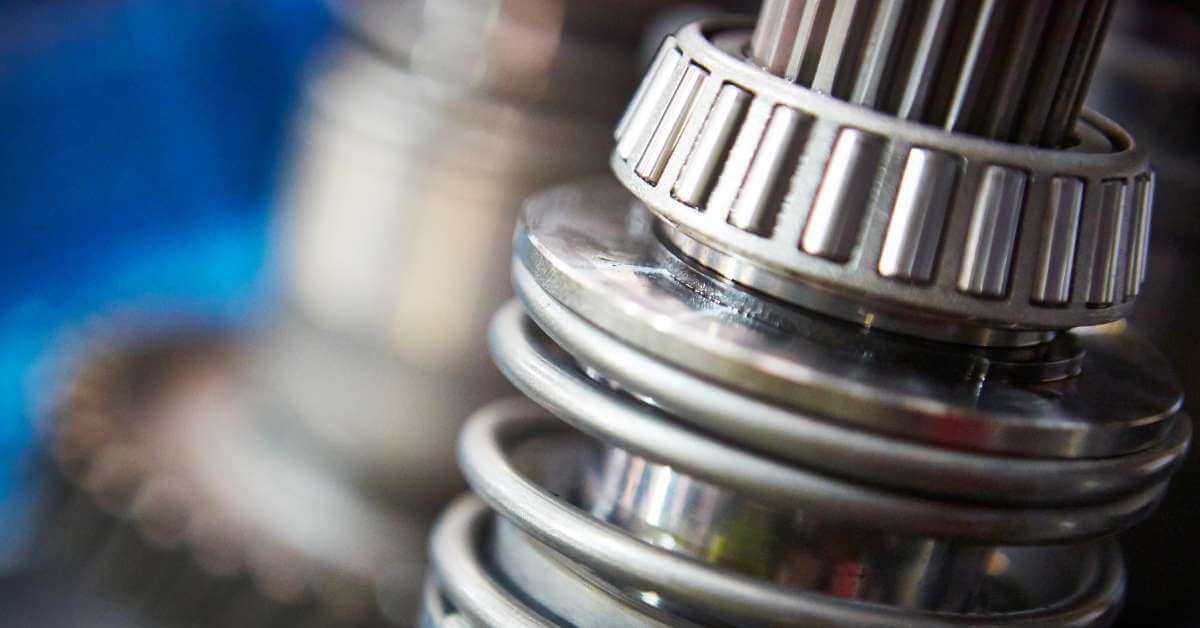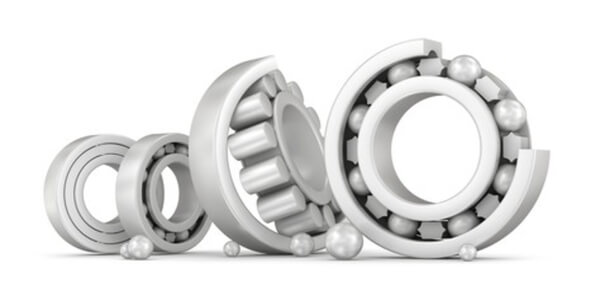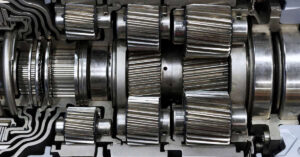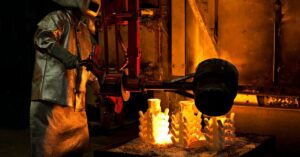In the fast-paced world of modern engineering and technology, the demand for high-performance components has led to the emergence of ceramic bearings as a game-changing innovation.
These high-speed bearings operate with minimal energy and come in two versions: full ceramic bearings and hybrid ceramic bearings. As industries strive for efficiency and reliability, these bearings have quickly become popular for various applications. They are also harder than steel bearings and therefore are more durable.
This article takes you on an in-depth exploration of ceramic bearings, discussing their benefits and disadvantages and their numerous applications across different sectors.
Full Ceramic Bearings
Full ceramic bearings are made completely from a ceramic material (external and internal races and balls). they are much superior to steel bearings, and they are perfect for applications that require high RPM, reduction in weight, high temperature, vacuum environment, corrosive environment, etc.
The construction of these bearings is similar to a normal steel ball bearing, except that the races and balls are made of ceramic.
The following ceramic materials are normally used for full ceramic bearings:
1. Silicon Nitride (Si3N4) Bearings
Silicon Nitride is an excellent material combining high strength retention, oxidation, and creep resistance. It can withstand higher temperatures as it has a low coefficient of thermal expansion and is more resistant to thermal shock than other ceramic materials.
Silicon Nitride has a density of 3.2 g/Cm3 (the density of steel is 7.8 g/Cm3), and it is 58% lighter than steel. The lightweight property reduces centripetal force during rotation and increases the bearing life.
Silicon Nitride is black in color and is good for high-speed and vacuum applications. Unlike other ceramics, it can hold loads similar to steel bearings.
2. Zirconium Dioxide (ZrO2) Bearings
Zirconia was first used in the 1970s as a thermal barrier on the externals of the space shuttle to enable its safe re-entry into the earth’s atmosphere. Zirconia Oxide has high corrosion resistance and can work at high temperatures.
The density of Zirconia Oxide is 6.05 g/Cm3 which is nearer to steel, and its thermal expansion is closer to steel than ceramics. The color of Zirconia Oxide is white.
Zirconia has no advantage over other ceramics, such as lightweight or thermal shock resistance. However, Zirconia has high strength, toughness, and resistance to wear and corrosion.
3. Silicon Carbide (SiC) Bearings
Silicon Carbide is costly and difficult-to-machine material; hence, it is a less preferred material for bearings. The hardness, corrosion resistance and heat resistance of Silicon Carbide is the best among ceramic materials.
Silicon carbide is good for applications with less load and extremely corrosive environments. The density of Silicon Carbide is 3.1 g/Cm3, and the color is brownish-black.
4. Alumina Oxide (Al2O3) Bearings
Aluminum oxide, or alumina oxide, is an exceptional material that possesses outstanding wear resistance, electrical insulation, high corrosion resistance, and can withstand high temperatures.
Alumina oxide is not recommended for highly alkaline environments due to its susceptibility to hydrochloric and hydrofluoric acids; it is widely used to manufacture ball-bearing balls.
Compared to silicon nitride and silicon carbide bearings, alumina oxide bearings are less costly but have lower fracture toughness. Alumina oxide density is 3.69 g/Cm3, and its color is white.
Hybrid Ceramic Bearings
Hybrid ceramic bearings represent another innovative development in the world of bearings, combining the best of steel and ceramic materials to create a high-performance solution.
Most sealed ceramic bearings are hybrid , which combine a steel race with ceramic ball bearings. As the name suggests, these bearings feature a unique blend of components, with steel races, cages and ceramic rolling elements, such as balls or rollers.
The lighter and smoother ceramic rolling elements allow up to 40% higher speed than standard steel bearings and consume less energy.
Ceramic Hybrid Bearings Vs. Steel Bearings
Hybrid bearings offer a range of advantages over standard steel bearings, making them an attractive option for various applications. Some of the key differences include:
Reduced Friction and Heat Generation
The ceramic rolling elements in hybrid bearings have a lower friction coefficient than steel, resulting in reduced frictional losses and heat generation. This improves energy efficiency, longer service life, and higher speed capabilities.
Increased Stiffness and Precision
Ceramic materials are inherently stiffer than steel, translating to increased rigidity and precision in hybrid bearings. This makes them an ideal choice for applications requiring high levels of accuracy and stability.
Enhanced Wear and Corrosion Resistance
The ceramic rolling elements in hybrid bearings are highly resistant to wear and corrosion, which helps prolong the bearing’s service life and maintain its performance even in harsh environments.
Lower Weight and Centrifugal Force
Ceramic materials are generally lighter than steel, reducing the rolling element’s weight in hybrid bearings. This leads to lower centrifugal forces during operation, enabling higher speed capabilities and reduced stress on the bearing components.
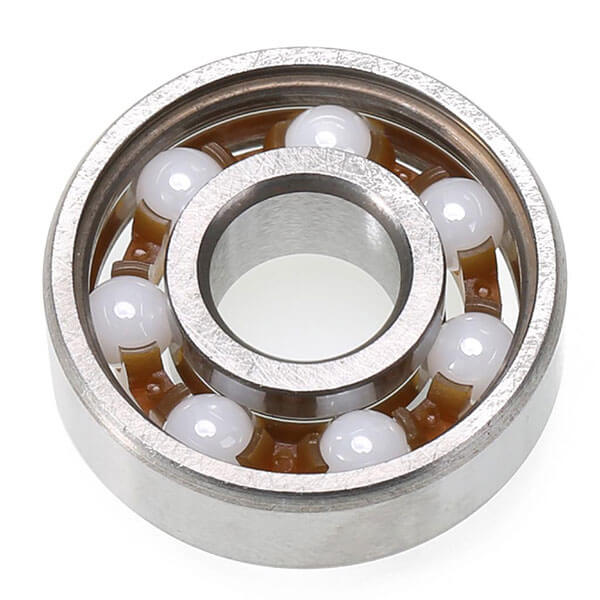
Types of Ceramic Bearings
Different types of ceramic bearings are:
1. Radial Ceramic Bearings
Radial ceramic bearings, also known as deep groove ceramic bearings, are designed to support radial and moderate axial loads in both directions.
These bearings are commonly used in applications requiring high speeds, low friction, and minimal maintenance.
2. Ceramic Angular Contact Bearings
Ceramic angular contact bearings are designed to support combined loads, handling both radial and axial loads simultaneously.
These bearings are ideal for applications requiring high precision, rigidity, and high-speed performance. The contact angle of the bearing determines its ability to support axial loads, with a higher contact angle providing greater axial load capacity.
3. Ceramic Thrust Bearings
Ceramic thrust bearings are designed to support axial loads and are often used in applications where high axial load capacity, low friction, and high-speed performance are essential.
These bearings can be found in various industries, such as aerospace, automotive, and machine tools.
4. Ceramic Insert Bearings
Ceramic insert bearings are designed to be easily mounted onto a shaft and secured within a housing. These bearings are ideal for applications with easy installation and maintenance, such as agricultural equipment, conveyors, and fans.
Ceramic insert bearings typically feature a set screw or locking collar mechanism to secure the bearing onto the shaft. They can be found in various ceramic materials to cater to different application needs.
5. Ceramic Self-Aligning Bearings
Ceramic self-aligning bearings are designed to compensate for misalignment between the shaft and housing, reducing stress on the bearing components.
These bearings are suitable for applications where misalignment is likely to occur, such as in heavy machinery, conveyors, and gearboxes.
All the above bearings function similarly to steel bearings of that type but can work at higher RPM with less energy.
Ceramic Bearings Production Process
Ceramic bearings are composed of ceramic balls and races, which are produced using the powder metallurgy process. The production process involves the following steps:
1. Powder Preparation: Ceramic materials are ground into fine powders, often adding binders and other additives to facilitate the subsequent forming process.
2. Forming: The ceramic powder is shaped into the desired form, such as balls or races, using pressing, injection molding, or extrusion methods.
3. Sintering: The formed parts are heated at high temperatures, causing the ceramic particles to bond and form a solid, dense structure.
4. Machining and Grinding: The sintered ceramic balls and races are then machined and ground to achieve the required precision and surface finish.
Selecting high-quality bearings is crucial, as low-quality ones may develop micro-cracks on their races, making them unsuitable for high-load applications. High-quality bearings are more reliable for high-speed and high-load requirements.
Benefits of Ceramic Bearings
Ceramic bearings offer numerous advantages; here are some of them:
Hardness and Wear Resistance: Ceramic materials boast a hardness of 70 to 90 HRC, allowing them to resist shape changes and wear when subjected to loads.
Minimal Lubrication Required: One of the standout features of these bearings is their ability to operate with little or no lubrication. This reduces maintenance requirements and ensures smooth and efficient operation, even in challenging conditions.
No Electric Arcs or High Heat: Unlike steel bearings, ceramic bearings don’t generate electric arcs or heat during rotation due to the surface roughness of the ceramic balls and races. This prevents micro-welds and surface degradation, leading to longer service life and consistent performance.
Excellent Corrosion Resistance: Ceramic materials are non-porous, non-metallic, and highly resistant to corrosion. They don’t react with atmospheric oxygen or humidity nor corrode in the presence of water and many chemicals.
Higher Bearing Speeds: Some ceramics have low density, which means low centripetal force during rotation. Combined with the low frictional coefficient of ceramic, this results in higher bearing speeds than steel bearings.
Non-Magnetic and Insulating Properties: These bearings are non-magnetic and excellent insulators. They are suitable for applications where electrical conductivity is undesirable or where magnetic fields could cause interference.
Lightweight and Energy-Efficient: These bearings can weigh up to 30 to 40% less than steel bearings of the same size. This weight reduction makes these bearings work up to 40% faster than normal steel bearings and with less energy.
Extreme Temperature Resistance: They can withstand extreme temperatures, ranging from -85° C to +900° C (-185° F to 1652° F).
Reduced Risk of Bearing Seizures: The highly smooth, glass-like surface of ceramic balls minimizes the risk of bearing seizures.
Superior Roundness and Dimensional Accuracy: Ceramic balls offer exceptional roundness and dimensional accuracy, much superior to steel balls in precision and consistency.
Disadvantages of Ceramic Bearings
While ceramic bearings offer numerous advantages, there are some drawbacks to consider as well:
Higher Cost: Ceramic bearings are significantly more expensive than steel bearings. The high price of these bearings is primarily due to the expensive and time-consuming processing of ceramics.
Complex Manufacturing Process: The extreme hardness of ceramics makes them difficult and costly to machine and grind to the required precision. Additionally, skilled workers must process ceramics in clean enclosures, adding to their overall cost.
Lower Load Capacity: Compared to steel bearings, ceramic bearings have a lower load capacity. This may limit their suitability for applications requiring high load-bearing capabilities.
Susceptibility to Thermal Shock: Ceramic bearings are more susceptible to thermal shock than steel bearings, which could affect their performance and longevity in certain applications.
Full Ceramic Bearing Applications
Ceramic bearings are versatile and find applications across various industries due to their unique properties:
Aerospace: Satellites and spacecraft benefit from these bearings’ lightweight, high-speed capability, and minimal lubrication requirements.
Transportation: Traction motors in rail engines use these bearings for their extended lifespan.
Chemical Industry: Ceramic eliminate contamination in chemical and mixing applications, as they are chemically inert.
Wash-Down Applications: These bearings withstand strong chemical cleaning fluids.
High-Speed Machinery: Used in mills, pumps, compressors, and precision instruments.
Semiconductor Manufacturing: It is ideal for cleanroom environments.
Food Processing: It is suitable for food and milk processing plants due to its non-contaminating properties.
Scientific Instruments: These bearings are used in various research equipment, including MRI (Magnetic resonance imaging) and radiotherapy machines.
Electric Motors and Generators: Their non-magnetic properties make bearings made from ceramic ideal for these applications.
Medical and Dental Equipment: These bearings are used for their precision and cleanliness.
Vacuum Environments: These bearings can operate in extreme vacuum conditions.
Bicycle and Motorcycle: Ceramic and hybrid bearings are popular in bicycle and motorcycle wheel bearings for their lightweight and high-speed capabilities.
Industrial Machinery: Their durability and performance make these bearings suitable for various industrial applications.
Conclusion
Ceramic and hybrid bearings have numerous benefits, including exceptional hardness, minimal lubrication needs, wear resistance, and the ability to function in harsh conditions.
Nevertheless, it is crucial to consider the possible drawbacks, such as higher expenses, complex production procedures, decreased load capacity, and susceptibility to thermal shock.
References:

